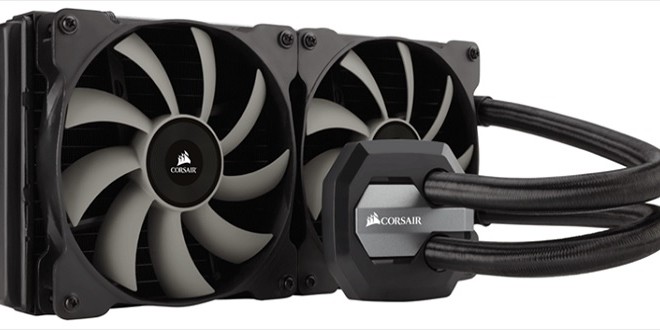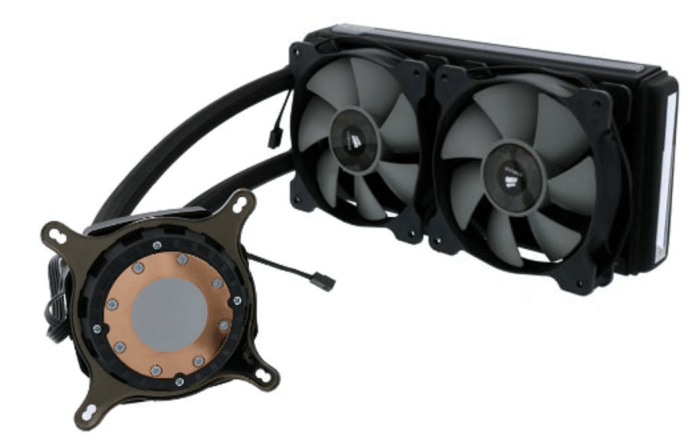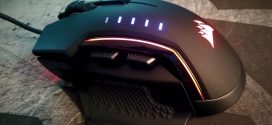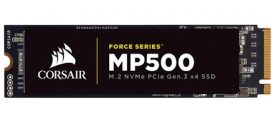Final Thoughts & Conclusion
The Corsair H110i GTX Extreme Performance delivered great cooling up to 4.3GHz on the 5820K, but temperatures rose quickly beyond that point, and at 4.4GHz it hit 89°C, just one degree short of us stopping the test. The 2000 RPM SP140L high torque PWM fans were delivering 104.65 CFM, and anyone who knows fans will tell you no fan is silent at that CFM level. We put our decibel meter one meter in front of the machine while it was under load and it registered 45dBA. Keep in mind that we disabled all the other fans on the test bed for the noise test, so the only fans running were the SP140L high torque fans. We would have to say that the Corsair H110i GTX Extreme Performance is one of the louder dual-radiator coolers we’ve come across. There’s always a trade-off when it comes to water cooling; you can have low RPM silent fans that do an OK job, or you can have higher RPM fans that make some noise. The Corsair H110i GTX made some noise but provided pretty good dual-radiator AIO cooling. We suspect that using an aluminum core radiator caused Corsair to pour on the airflow to compensate for the lack of a brass core radiator.
89°C, just one degree short of us stopping the test. The 2000 RPM SP140L high torque PWM fans were delivering 104.65 CFM, and anyone who knows fans will tell you no fan is silent at that CFM level. We put our decibel meter one meter in front of the machine while it was under load and it registered 45dBA. Keep in mind that we disabled all the other fans on the test bed for the noise test, so the only fans running were the SP140L high torque fans. We would have to say that the Corsair H110i GTX Extreme Performance is one of the louder dual-radiator coolers we’ve come across. There’s always a trade-off when it comes to water cooling; you can have low RPM silent fans that do an OK job, or you can have higher RPM fans that make some noise. The Corsair H110i GTX made some noise but provided pretty good dual-radiator AIO cooling. We suspect that using an aluminum core radiator caused Corsair to pour on the airflow to compensate for the lack of a brass core radiator.
You can look at a product and make a snap judgement call and say “oh it was a little noisy, we hate it”, or you can weigh in all the factors and realize that dual-radiator DIY kits can run a couple hundred dollars for marginally better performance. It’s just a fact that in the $120 price for the Corsair H110i GTX Extreme Performance watercooling system does a pretty darn good job.
The simple setup and ready to go, out of the box aspect of the Corsair H110i GTX make it a solid, if somewhat noisy, option for AIO dual-radiator watercooling. If the noise bothers you, slap a couple more fans on the other side of the radiator and control the RPMs using Corsair Link and things will quiet down pretty quickly.
Running $119.98 on Amazon at the time of publishing, it’s not hard to recommend the Corsair H110i GTX for an easy to install, fairly inexpensive watercooling solution. The ability to monitor the coolant temperature and the CPU temperature with Corsair Link helped sell us on the kit. You can never have enough thermal information on your CPU when you are taking OCing to the ragged edge, and the H110i GTX allows you to take your CPU to the ragged edge and keeps you informed of the CPU temperature so you know when to quit.
Like any other product, there were things we liked and things we didn’t, but in the balance we found more to like. If we had to pick two things that we didn’t like, it would be that the CPU hold down plate wasn’t made of very substantial material and the fans made some noise. On the flip side of that, the Corsair H110i GTX did exactly what it was supposed to do, and that’s to allow a good, solid OC consistent with dual-radiator cooling systems.
| Pros | Cons |
|
|
 Bjorn3D.com Bjorn3d.com – Satisfying Your Daily Tech Cravings Since 1996
Bjorn3D.com Bjorn3d.com – Satisfying Your Daily Tech Cravings Since 1996










So is it H100i GTX or H110i GT? 😉 Pictures from the first one, description about 140 mm fans…
It’s H110I GTX, neither of the ones you mentioned 😉
So it is a review of the H110I GTX, yet you still post multiple images clearly showing the 120 mm version h100i GTX. And you even refer to the h100i in the socket compatability list.
This is such a confusing review with several errors, that makes it difficult, for me at least, to take your results with any credibility.
I have an ivy bridge 3570k clocked to 4.7 ghz with cool laboratory liquid TIM and arctic 13 cooler, and I don’t get more than 73C at load. I don’t see how this expensive water cooler is any better than my 30 dollar cooking setup?